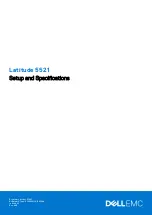
2
Concepts
, functions and gateway design
UGW X-series
Concepts, functions and gateway design
8 of 66
Data point type as part of address
To be able to use the address to derive specified information concerning possible uses, the address
contains a code letter. With this, the direction of data flow and the type of values are determined.
The four most important data point types are covered below. For special purposes, other types
come into consideration, which will be explained when used.
Five important data point types:
•
X – analogue value that is transmitted from the communication partner to the gateway.
•
Y – analogue value that can be transmitted in both directions.
•
M – binary/multi-level value that is transmitted from the communication partner to the
gateway.
•
S – binary or multi-level value that can be transmitted in both directions.
•
A – string, e.g. used for BACnet Trends or ESPA4.4.4 data points
Address ID as part of the address
In order to be able to correctly interpret the protocol-specific part of the address, an abbreviation of
the communication protocol or the driver name within the gateway is used.
Examples:
•
mod
for MODBUS addresses
•
pnetd
for Profinet addresses
•
bac
for BACnet addresses
Protocol-specific address
The last part of the address is determined by the communication protocol.
Additional examples for data point addresses in the gateway system:
70.M eib 4/5/6
Routing address 70; data point type M; address type eib; EIB group address 4/5/6
940.Y bac 34.AV 55
Routing address 940; data point type Y analogue value; address type bac; BACnet address
34.AV 55
2.4
Mapping
The X-series family of products consists of universal gateways (UGWs) handled in a uniform way
which command a large selection of supported protocols. The gateways offer data access to a
defined range of data points which can be mapped to another area (e.g. LON network variables
(NVs) to BACnet objects). Mapping can be configured using a macro-controlled table. By connecting
data points of different network technologies, data can be exchanged between these technologies
(gateway function).
Mapping possibilities
A mapping basically consists of a source data point and a target data point. Changes in the value of
the source data point are transmitted to the target data point. This transfer can be influenced by
additional configuration entries. The address of the source data point is entered as a section in the
Attention:
There may be several meaningful ways to assign a data point type to a data point. The selected
data point type must be used consistently. A frequent source of error in the configuration is to use
different data point types for the same data point.









































